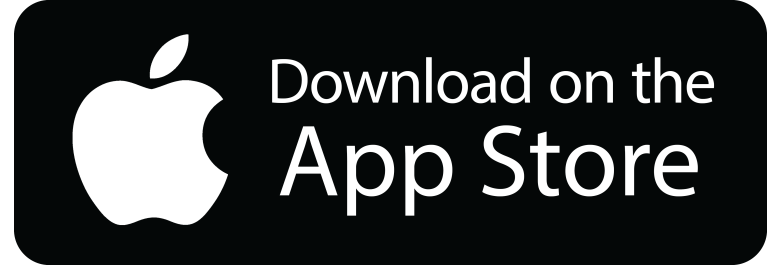The Power of Curiosity
Curiosity is the spark that ignites innovation. It's the driving force behind some of the world's most game-changing ideas and inventions. It's what prompted Thomas Edison to invent the lightbulb, Alexander Graham Bell to invent the telephone, and the Wright brothers to invent the aeroplane.
Curiosity is not just limited to these great inventors. Children, for example, are naturally curious and innovative. They question everything around them, play mind-boggling games and bombard their parents with tough questions. They experiment, try new things and never stop learning.
But as we grow up, we become more risk-averse and less willing to experiment. We become focused on the outcome rather than the process, which limits our ability to think creatively.
Innovation through Questioning
To innovate, we need to start questioning everything around us. Innovation isn't only about creating something from scratch; it's about improving current processes and seeing old problems with fresh eyes.
For instance, think about the daily tools and technologies we use. Computers, smartphones, the paint on the wall or cooking materials. We often take them for granted, but they all started with someone questioning the status quo. By questioning how things work, we begin spotting problems and identifying areas for improvement. We can ask ourselves questions like: Can we make computers faster? How can we enhance processing? These are billion-dollar questions, and answering them could lead to the next big idea.
Curiosity as a Framework for Innovation
Curiosity is a framework for innovation that can be applied to any industry or situation. It's a process that starts with questioning, is followed by exploration and experimentation and ends with implementation.
Here's a breakdown of how this framework works:
1. Questioning:
Start by asking questions about the problem you want to solve. Why is it a problem? What are the underlying issues? How can it be solved? By asking these questions, you begin to identify areas for improvement.
2. Exploration:
Once you have identified the problem, start exploring possible solutions. Research, analyse data, and brainstorm ideas. Be open-minded and consider all possibilities.
3. Experimentation:
Test your ideas and hypotheses through experimentation. Create prototypes and get feedback from others. Fail fast and learn from your mistakes.
4. Implementation:
Finally, implement your solution. This is the stage where you bring your idea to life and make it a reality.
Examples of Inventions Created Out of Curiosity
Countless examples of inventions were created out of curiosity. Here are just a few:
1. Post-it notes: Spencer Silver was a chemist at 3M trying to create a super-strong adhesive. Instead, he accidentally created a weak adhesive that could be easily removed. It wasn't until a colleague, Art Fry, saw the potential for this adhesive in bookmarks that the idea for Post-it notes was born.
2. Airbnb: Brian Chesky and Joe Gebbia founded Airbnb after they struggled to pay rent and decided to rent out air mattresses in their apartment to attendees of a design conference. This curiosity led to creating one of the world's largest hospitality companies.
3. Tesla: Elon Musk, the founder of Tesla, started questioning the limitations of traditional gasoline-powered cars and exploring the potential of electric cars. This led to the creation of Tesla, a company that has revolutionised the automobile industry.
4. Google: Larry Page and Sergey Brin founded Google while they were PhD students at Stanford University. They started questioning the limitations of existing search engines and exploring the potential of a better search engine. This led to the creation of Google, which has become the world's most widely used search engine.
These examples show that curiosity can lead to game-changing ideas and innovations. By embracing curiosity and questioning everything around us, we can identify problems and find solutions others have overlooked.
Tips for Keeping Curiosity and Innovation Going
Embracing curiosity is just the first step towards innovation. Here are some tips for keeping curiosity and innovation going:
1. Stay curious: Keep asking questions and challenging assumptions. Don't be afraid to explore new ideas and try new things.
2. Embrace failure: Failure is a natural part of the innovation process. Learn from your mistakes and use them as a stepping stone to success.
3. Surround yourself with curious people: Curiosity is contagious. Surround yourself with people who are also curious and innovative. This will inspire and motivate you to keep pushing the boundaries.
4. Stay informed: Keep up-to-date with the latest developments in your industry. Read books, attend conferences and network with others. This will help you stay on the cutting edge of innovation.
5. Take risks: Innovation requires taking risks. Don't hesitate to step out of your comfort zone and try something new.
Embracing curiosity is the key to developing innovation skills. It's what separates successful innovators from the rest. By questioning everything around us and exploring new ideas, we can identify problems and find solutions others have overlooked. So, let your curiosity lead you and see where it takes you. Who knows, you might just come up with the next big idea that changes the world.
Creo Incubator offers Problem Identification and Design Thinking courses that teach participants how to question assumptions, identify problems, and develop creative solutions using design thinking methodologies. These courses help entrepreneurs and innovators stay curious and think outside the box.
Curiosity is the spark that ignites innovation. It's the driving force behind some of the world's most game-changing ideas and inventions. It's what prompted Thomas Edison to invent the lightbulb, Alexander Graham Bell to invent the telephone, and the Wright brothers to invent the aeroplane.
Curiosity is not just limited to these great inventors. Children, for example, are naturally curious and innovative. They question everything around them, play mind-boggling games and bombard their parents with tough questions. They experiment, try new things and never stop learning.
But as we grow up, we become more risk-averse and less willing to experiment. We become focused on the outcome rather than the process, which limits our ability to think creatively.
Innovation through Questioning
To innovate, we need to start questioning everything around us. Innovation isn't only about creating something from scratch; it's about improving current processes and seeing old problems with fresh eyes.
For instance, think about the daily tools and technologies we use. Computers, smartphones, the paint on the wall or cooking materials. We often take them for granted, but they all started with someone questioning the status quo. By questioning how things work, we begin spotting problems and identifying areas for improvement. We can ask ourselves questions like: Can we make computers faster? How can we enhance processing? These are billion-dollar questions, and answering them could lead to the next big idea.
Curiosity as a Framework for Innovation
Curiosity is a framework for innovation that can be applied to any industry or situation. It's a process that starts with questioning, is followed by exploration and experimentation and ends with implementation.
Here's a breakdown of how this framework works:
1. Questioning:
Start by asking questions about the problem you want to solve. Why is it a problem? What are the underlying issues? How can it be solved? By asking these questions, you begin to identify areas for improvement.
2. Exploration:
Once you have identified the problem, start exploring possible solutions. Research, analyse data, and brainstorm ideas. Be open-minded and consider all possibilities.
3. Experimentation:
Test your ideas and hypotheses through experimentation. Create prototypes and get feedback from others. Fail fast and learn from your mistakes.
4. Implementation:
Finally, implement your solution. This is the stage where you bring your idea to life and make it a reality.
Examples of Inventions Created Out of Curiosity
Countless examples of inventions were created out of curiosity. Here are just a few:
1. Post-it notes: Spencer Silver was a chemist at 3M trying to create a super-strong adhesive. Instead, he accidentally created a weak adhesive that could be easily removed. It wasn't until a colleague, Art Fry, saw the potential for this adhesive in bookmarks that the idea for Post-it notes was born.
2. Airbnb: Brian Chesky and Joe Gebbia founded Airbnb after they struggled to pay rent and decided to rent out air mattresses in their apartment to attendees of a design conference. This curiosity led to creating one of the world's largest hospitality companies.
3. Tesla: Elon Musk, the founder of Tesla, started questioning the limitations of traditional gasoline-powered cars and exploring the potential of electric cars. This led to the creation of Tesla, a company that has revolutionised the automobile industry.
4. Google: Larry Page and Sergey Brin founded Google while they were PhD students at Stanford University. They started questioning the limitations of existing search engines and exploring the potential of a better search engine. This led to the creation of Google, which has become the world's most widely used search engine.
These examples show that curiosity can lead to game-changing ideas and innovations. By embracing curiosity and questioning everything around us, we can identify problems and find solutions others have overlooked.
Tips for Keeping Curiosity and Innovation Going
Embracing curiosity is just the first step towards innovation. Here are some tips for keeping curiosity and innovation going:
1. Stay curious: Keep asking questions and challenging assumptions. Don't be afraid to explore new ideas and try new things.
2. Embrace failure: Failure is a natural part of the innovation process. Learn from your mistakes and use them as a stepping stone to success.
3. Surround yourself with curious people: Curiosity is contagious. Surround yourself with people who are also curious and innovative. This will inspire and motivate you to keep pushing the boundaries.
4. Stay informed: Keep up-to-date with the latest developments in your industry. Read books, attend conferences and network with others. This will help you stay on the cutting edge of innovation.
5. Take risks: Innovation requires taking risks. Don't hesitate to step out of your comfort zone and try something new.
Embracing curiosity is the key to developing innovation skills. It's what separates successful innovators from the rest. By questioning everything around us and exploring new ideas, we can identify problems and find solutions others have overlooked. So, let your curiosity lead you and see where it takes you. Who knows, you might just come up with the next big idea that changes the world.
Creo Incubator offers Problem Identification and Design Thinking courses that teach participants how to question assumptions, identify problems, and develop creative solutions using design thinking methodologies. These courses help entrepreneurs and innovators stay curious and think outside the box.
Write your awesome label here.
Never miss our news!
Thank you!
Get updates on live streams, news and more right in your mailbox.



